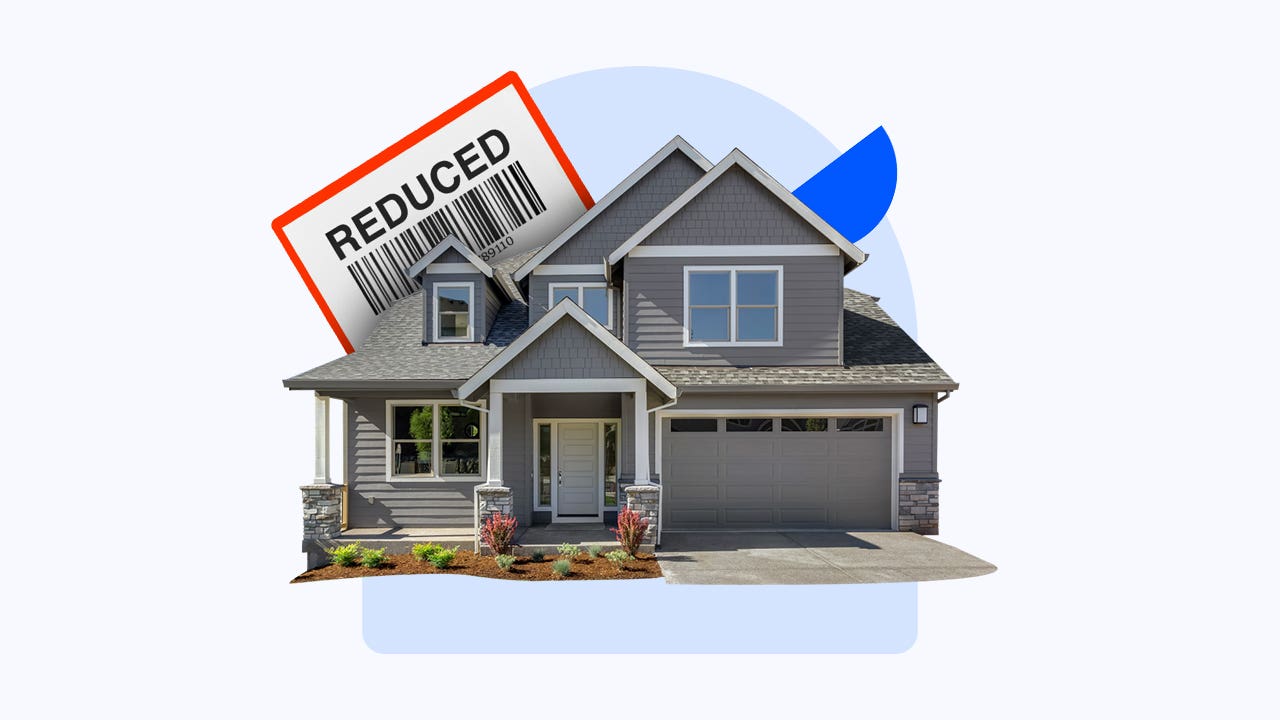How to get a low-cost mortgage refinance

Key takeaways
- Refinancing your mortgage includes expenses just like your original mortgage did, including closing costs.
- Opting for a no-closing-cost refinance can save you money upfront, but you’ll likely get a higher interest rate in return.
- Shopping around and comparing offers from multiple mortgage lenders can also help secure a low-cost refinance.
By refinancing, you can lower your mortgage interest rate and monthly payments, resulting in long-term savings. It’s important to remember, though, that refinancing means getting a new mortgage to replace your current loan. And just as there were expenses — such as closing costs — when you got your first mortgage, there are costs that come with refinancing. Here are some ways to improve your chances of getting a low-cost refinance.
What are the costs of refinancing?
Refinancing your mortgage isn’t free. It comes with several closing costs that can add up. These can include:
- A loan origination fee
- An appraisal fee
- A survey fee
- Title fees
- Attorney fees
- Credit check fee
- Discount points
In general, refinance closing costs equal around 2 percent to 5 percent of the new loan amount. So, for a $400,000 loan, you’re talking between $8,000 and $40,000. Keep in mind that these fees vary a lot by lender and location.
You may find a lender advertising a low-fee refinance, which could be a great option for you. Just know that some lenders may charge less fees, but the loan comes with a higher rate than what their competitors offer. Also, some lenders will let you negotiate or waive certain fees. Your lender has to provide you with a complete rundown of the fees in your loan estimate.
Learn more: How much does it cost to refinance a mortgage?
How to get a low-cost refinance
There are some steps you can take to help you get the lowest closing cost refinance possible.
1. Get the lowest possible rate
Qualifying for the lowest possible mortgage refinance rate is one of the best ways to save money long term.
Here are some tips for ensuring that you’re likely to get the most favorable rate:
- Review your credit report. Take a look at your credit report to make sure there aren’t errors. Fixing mistakes can help you boost your score.
- Improve your credit score. The best way to improve your credit score is to pay down debts on time. The lower your debts when compared to your credit limit, the better.
- Build your savings. Add to your savings whenever possible. With more savings, you might be seen as less of a risk and score better rates as a result.
- Choose your loan term wisely. A shorter loan term usually means a lower rate but a higher monthly payment. If you can afford the higher payment on a 15-year refinance, you might be able to get a better interest rate than what you’d receive with a 30-year term.
- Compare rates online. Take a look online to see what mortgage refinance rates are available. This can give you an idea of what to expect. Compare the annual percentage rate, or APR, which includes fees and is a more comprehensive estimate of the costs of the mortgage than just the interest rate.
- Lock in your rate. When getting approved for a refinance, see if you can lock in your mortgage rate. Locking in your rate can help protect you against increases as long as the loan closes within a set time. If rates decline during the lock period, lenders might allow you to take the new, lower rate.
Learn more: How to get the best possible refinance rate
2. Consider a no-closing-cost refinance
One way to get a low-cost refinance is to avoid closing costs altogether. With a no-closing-cost refinance, you don’t incur any upfront fees. That can save you money — at least in the short term.
However, you need to check whether your lender is actually waiving your closing costs or simply shifting some of the fees. There are two main ways that no-closing-cost refinances work to help you avoid paying a lump sum upfront:
- Higher interest rate: The lender might charge you a higher interest rate to make up for the no-closing-cost refinance. The lender still gets what you would have paid in closing costs because you’re paying more in interest.
- Roll fees into the principal: The lender can add the closing costs to your overall loan balance. It is convenient — no need to dig up cash on closing day — but it increases the total sum you’re borrowing and the amount that interest is going to be calculated on.
One caveat: Both of these scenarios result in paying more in interest over time, either because of the higher rate or because you have a bigger principal amount.One caveat: Both of these scenarios result in paying more in interest over time, either because of the higher rate or because you have a bigger principal amount.
3. Compare mortgage lenders
You are not required to refinance with your current lender. You might get a better mortgage rate simply by shopping around with multiple lenders.
Plus, if you get an attractive quote from one lender, you could have leverage with the next — or your primary lender.
Wondering where to start? Bankrate has compiled a list of top mortgage refinance lenders to consider when shopping around for a low-cost refinance.
4. Consult with your lender
You can also try negotiating your closing costs with the lender to get low-cost refinancing. It might be able to reduce or waive certain fees, so ask if there are discounts or waivers available. Sometimes, if you’re already a borrower with the lender or if you can show some other compelling reason (like you’ll choose another lender with a better offer), you might be able to get a break.
How to calculate if refinancing is worth it for you
Whether refinancing is worth it depends on your situation, as well as the numbers. Bankrate’s mortgage refinance calculator can help you run the numbers to see what works best for you.
However, it’s not just about avoiding upfront closing costs. How long you’ll be in the home and your own preferences play a role in the decision, too.
In particular, a no-closing-cost refinance can work well if you won’t stay in the home for very long: a good rule of thumb is if you plan to be out of the house within five years. If you can save on overall costs before you plan to move out, it might be worth the cost and even be a net benefit.
With a refinance like this, though, the extra or higher interest can add up to much more than the original closing costs if you keep the loan for another 15 to 30 years — so if you plan to stay put, consider other options. It might make more sense to pay your closing costs upfront in a lump sum rather than doing something that increases the interest you’ll pay.
Even if you stay in the home, refinancing still can be worth it — if you can save a lot on interest and payments, either with a lower interest rate or a shorter loan term.







